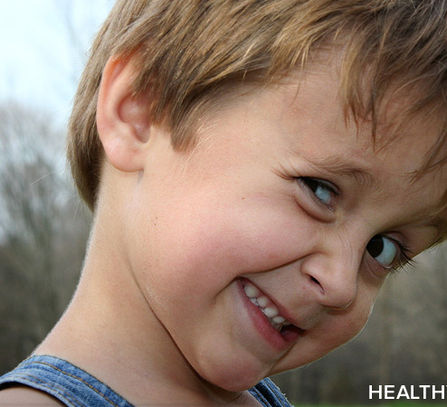GILLES DE LA TOURETTE SYNDROME
Brief Summary
Gilles de la Tourette Syndrome (GTS) is a neurobehavioral disorder characterized by motor and vocal tics. It is manifested during childhood and is generally lifelong and chronic.
Frequency
It affects at least 1% of the world's population, according to research. Although the exact incidence of Tourette syndrome is uncertain, it is estimated to affect 1 to 10 in 1,000 children. This disorder occurs in populations and ethnic groups worldwide, and it is more common in males than in females.
Frequency
Gilles de la Tourette Syndrome (GTS) is believed to be inherited in an autosomal dominant manner. However, with various studies, it is considered to be a multifactorial inheritance wherein more than 1 factor causes the health problem.
History of Disease
In the year 1885, Georges Gilles de la Tourette, a 28-year-old neurologist at l'Hopital de la Salpetriere, first described GTS in a scientific article. He chose Marquise de Dampierre's life history as the first and prototypic example of the disorder.


Pathogenesis
Achondroplasia is caused by a mutation in the FGF3 gene in chromosome 4 at 4p 16.3. This mutation causes a decreased production of fibroblast growth factor receptor 3 which is crucial in the conversion of cartilage into bone which is vital in the proper development of a person. This mutation is inherited in an autosomal dominant manner. More than 80 percent of people with achondroplasia have parents with normal characteristics and are born with achondroplasia due to a recent (de novo) gene modification (mutation).
Pathogenesis
The mode of inheritance of Gilles de la Tourette Syndrome was first thought to be autosomal dominant. However, due to lack of corroborations in studies, this hypothesis was discarded. As of the present, it is agreed that GTS has a complex, multifactorial inheritance. This means that several genes may be involved and interacting with one another, and that environmental factors may also contribute. Nevertheless, studies have confirmed that genetic factors have a greater impact in the development of GTS.
Affected individuals tend to have a family history of GTS or a broader GTS phenotype. Certain studies have also found that parent-offspring relative recurrence risk is higher compared to the sibling relative recurrence risk, indicating that GTS is vertically transmitted. The genetic influence of GTS is further supported by twin studies, with 89-94% concordance.
In children, the male to female ratio of the disorder is 4:1 whereas in adulthood, it is 2:1.
The chromosome location of GTS is currently undetermined. Several chromosomal regions as potential candidate loci: 3p21–p14, 4q34–q35, 5q35.2–q35.3, 6p21, 7q31, 11q23–24, 13q31.1, 15q21.1–15q21.3, and 17q25. However, only chromosome 13 (SLITRK1 locus) and 15 (HDC locus) are found to have genes and causal mutations associated with GTS.
Symptoms
1
Simple phonic tics include:
-
sniffling
-
throat clearing
-
Blowing
-
coughing
-
grunting
-
hooting
-
shouting
2
complex phonic tics include:
-
coprolalia (uttering socially inappropriate words such as swearing)
-
echolalia (repeating others' words or phrases)
-
palilalia (repeating one’s own sounds or words)
3
simple motor tics include:
-
eye blinking or darting
-
facial grimacing
-
nose twitching
-
head jerking
-
shoulder shrugging
-
mouth twitching
Social Concerns
-
Attention Deficit Hyperactivity Disorder (ADHD): inattention, hyperactivity, impulsivity
-
Obsessive-Compulsive Disorder (OCD): intrusive thoughts/ worries and repetitive behaviors
-
Pervasive Development Disorder (PDD): delay in social and communication skill development
-
Anxiety: excessive worries or fearfulness
-
Behavioral and conduct problems: anger-management issues and poor impulse
-
Learning disability: difficulties in reading, writing, arithmetic, and/or other information process
-
Social skills deficits and social functioning: Trouble developing social skills; maintaining social relationships with peers, family members, and other individuals; and acting in an age-appropriate manner.
-
Sleep disorders
Treatment
GTS has no cure, but it can be treated. Clinical treatment of GTS includes medications, cognitive behavioral therapy, and deep brain stimulation.
Neuroleptics can be used for tic suppression. Stimulants can be used for ADHD symptoms and antidepressants for OCD symptoms.
Cognitive behavioral therapy can also be used to reduce tics and other co-occurring symptoms (ADHD, OCD, PDD, etc.).
Deep Brain Stimulation is a new option in the treatment of GTS. Its aim is to “neuromodulate” abnormal communication that occur deep within the brains of people with TS.
Clinical Trials
Title:
Treatment of Gilles de la Tourette Syndrome by Bilateral Stimulation of the Internal Part of the Globus PALLIDUS
Intervention:
Device - Deep brain stimulation
Phase:
Phase 3
Procedure:
The evaluation will be:
-
neurological (YGTSS, video scale of the tics);
-
psychiatric, with in particular of the specific psychopathological evaluations centered on mood;
-
neuropsychological, centered on impulsiveness;
-
functional calculus evaluating total operation and the social adaptation;
-
neurophysiological (recording of the neuronal activities).
Calculations of the number of subjects necessary showed, by laying down the principal objective at an improvement of at least 60 % of the score of the YGTSS under treatment, which 14 subjects will make it possible to show a significant difference with the procedure placebo.
Goal:
The interest of this multi-centric study, which will be carried out in centers specialized in the field of major cerebral stimulation with for each one a multidisciplinary team, is to carry out a homogeneous protocol which should make it possible to give a clear response in term of effectiveness for this treatment in this pathology.
Further details at:
To learn more about this study, you or your doctor may contact the study research staff using the contact information provided by the sponsor. Please refer to this study by its ClinicalTrials.gov identifier (NCT number): NCT00478842.
Expert Directory
References
FOR INFORMATION
FOR IMAGES




.png)






